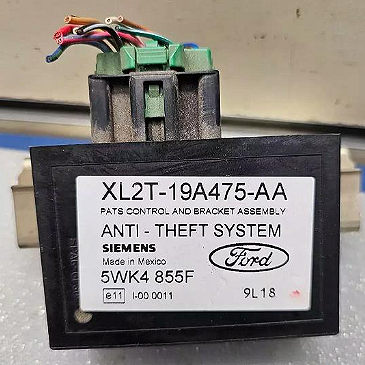ifitaintbroke
Well-Known Member
yeah neither of her tauri were SHO's, but my boss in my first job out of college had a taurus SHO - never looked under the hood.
The interesting one is the SHO v8. Made by Yamaha.
![]() Welcome Visitor! Please take a few seconds and Register
for our forum. Even if you don't want to post, you can still 'Like' and react to posts.
Welcome Visitor! Please take a few seconds and Register
for our forum. Even if you don't want to post, you can still 'Like' and react to posts. ![]()
yeah neither of her tauri were SHO's, but my boss in my first job out of college had a taurus SHO - never looked under the hood.
Another thing. If I REALLY want a supercharged 3.8, can't I just add a blower later?
you can add a blower to anything, the problem is if you add a blower to a normal 9:1 (wiki says 9.2-9.3:1 for the 3.8) compression engine you have two choices premium fuel or very mild boost. If you lower the compression ratio down (like Ford did on the 3.8 SC) down to 8:1 (wiki says 8.2-8.6 depending on years) then you can run a hotter boost and not automatically get into premium fuel.
A buddy of mine added an eaton style to his chevy silverado (almost the same LS engine as a corvette - just change the heads), and while it ran like a mother and he ran it at bandimeer a bunch, it took premium which is out of my budget to do all the time.
If you always always never without have E85 available then you could fill with 3/4 tank regular and 1/4 tank E85 - makes filling up a double pump pain in the ass, but E85 is like 109 octane. My buddy didn't have that available and it makes loaning it to anyone or roadtrips all but impossible (not to mention you have to design the fuel system for ethanol entirely end to end).
It starts becoming less of a direct swap and more of an engineer everything from scratch. (the Ranger did come in a flex fuel for a few years, so E85 rated stuff is out there, the 3.0 vulcan was FFV used in rangers and the 4.0 SOHC cologne was FFV in explorers for at least 1 year)
One side note on that E85 octane rating is all over the place - no consistency, so if you decide to go that route you have to budget for extra E85 all the time to make sure you are high enough octane as the pump varies too much.

The ecm from the Thunderbird to run the engine (duh), and the Ranger's ecm to power the speedometer and voltmeter
There's nothing bussed to the cluster on your Ranger or an early 90's Supercoupe. You should be able to just use the electronics from the Supercoupe in the Ranger.
Ford didn't really start bussing signals around until the early 2000's.
Considering the constraints and issues, I would probably go with the mustang 3.8 (98-04), non supercharged... but I live in emmisions world and have to abide by the first rule, "it has to be the same year or newer". Then see what all a guy could do for headers, exhaust, etc etc to get every last ounce out of that combo without opening the block up and doing a total rebuild (assuming your donor motor runs nice and has good compression and leakdown all pass indicating no rebuild need).
If I struck out and got a bad motor from the donor, and HAD to rebuild then I would scour around for SC parts and order / swap out to get the lower compression (don't have the first clue, but would think it would be in the heads not a stroke length).
Course 98+ you get all the OBD2 advantage but have to put up with PATS, so it becomes an issue of which flavor of PATS is it, and is it integrated into the instrument cluster too.
A lot of guys have done the 5.0 swap from an explorer and I think the advice from there applies - get the whole roller as a donor off facebook /private sale and skip the yard (they wont sell whole cars), that way you have everything, computer, wiring harness example (even if you have to build your own for the different lengths), computer - the whole shootin match.
one of the best PATS writeups - more detail than just PATS1 and PATS2, it goes in to the A/B/C/D/E/F/G subvariants - no clue what 98 had in Ranger or Mustang, etc.

Understanding The Ford PATS (Passive Anti-Theft System) - The Ranger Station
This page gives you an understanding on the PATS (Passive Anti-Theft System) in your 1999-2010 Ford Ranger.www.therangerstation.com
that was another reason why I said megasquirt - gives you total control over the computer tables and zero PATS headache if you want to run without...
If you want a SC motor, start with an SC motor. Do not start with a RWD motor then add the supercharger later. There no internal parts it common between the SC and the RWD engines… heads are different, block is different, not even the bearings are the same.Excellent! That's brilliant! I wonder if fwd and rwd 3.8s have the same mounting points. I'll bet they do. It would have been pointless to change that when they were making different mounts anyway.
Another thing. If I REALLY want a supercharged 3.8, can't I just add a blower later? And, realistically, I might find myself satisfied with a n/a 3.8
